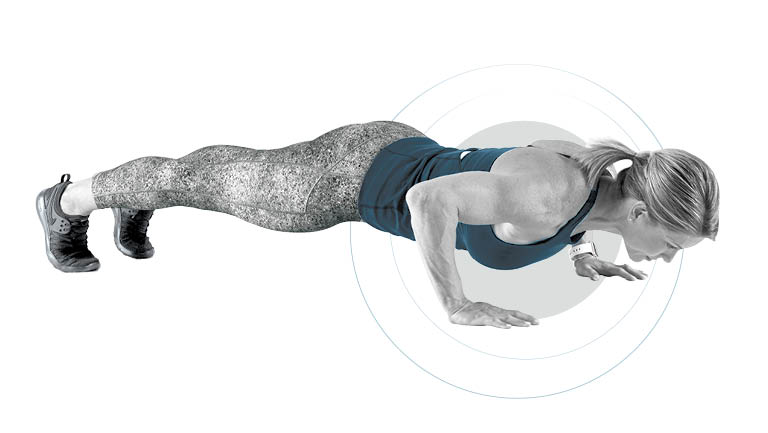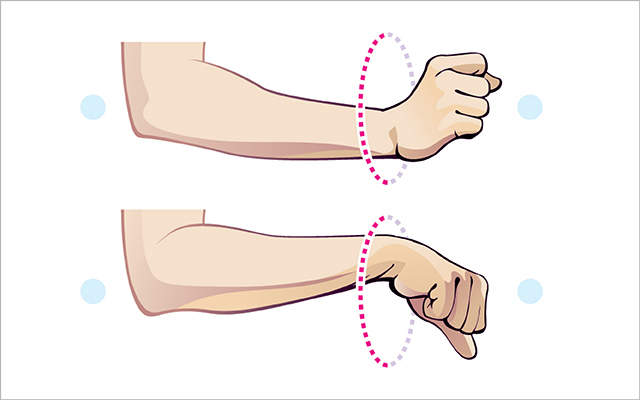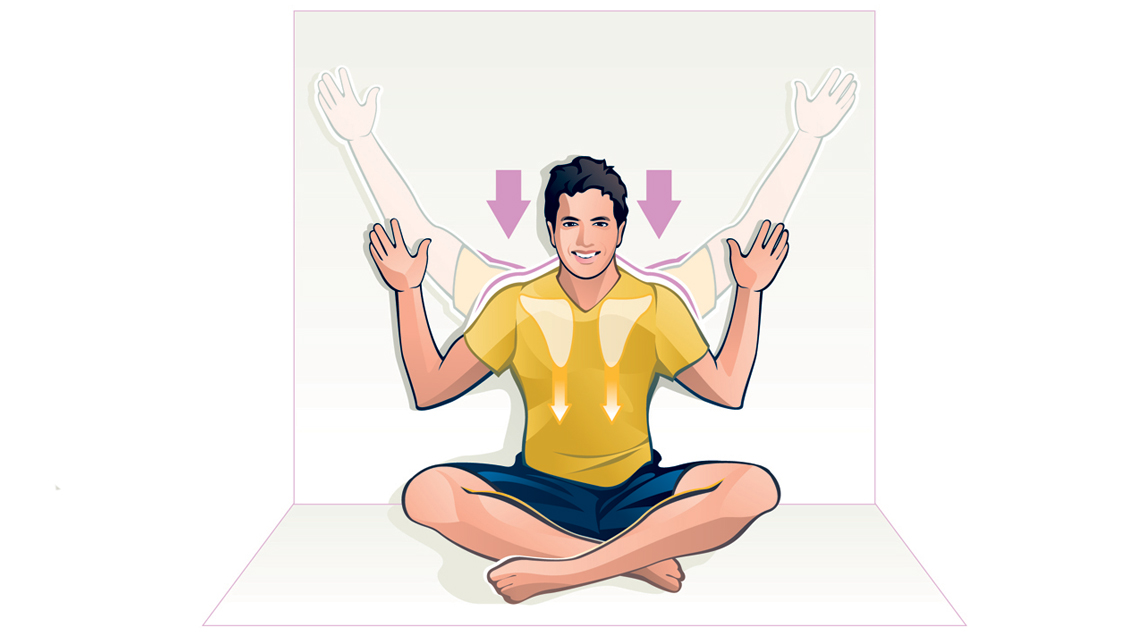The pushup calls for more than just arm strength; it requires strength in the chest, back, core, glutes, and quads, as well as stability in the wrists and shoulders. All of these parts must work together to maintain what is recognized as ideal pushup form — a straight line from head to heels — throughout the exercise.
How to Test: Assume a plank position. Bend your elbows to lower yourself with control until your arms bend to 90 degrees or deeper. Press through your hands to rise back up.
Perform as many pushups as you can without sacrificing form. If you can’t do one great-form pushup with your hands on the floor, elevate your hands on a bench, table, countertop, or wall. Avoid berating yourself for elevating your hands and focus instead on the task at hand: getting stronger.
How to Assess: Record the number of reps and the pushup variation you performed. Over time, you will see improvements in both of these. Let’s say the first time you test you are able to do 10 great-form pushups with your hands elevated on a weight bench. Eventually, you might be able to perform more reps with your hands elevated, or you might find that you can maintain the same great form and rep count with your hands on a lower box or on the floor. These are both signs of improved strength.
How to Improve: Perform three sets of a challenging 10 repetitions, three times each week. On nonpushup days, hold a plank position for 30 seconds.
For more pushup tips, variations, and progressions, visit “BREAK IT DOWN: The Pushup“.
This was excerpted from “Fitness Testing 2.0” which was published in the June 2021 issue of Experience Life magazine.





This Post Has One Comment
A pushing motion might be considered fundamental, but the push-up is not inherently so. It involves pushing with a very specific position & force scenario that some people will not tolerate well (& may never be able to progress to) due to a number of factors, including structural considerations that can’t be changed. To use it as some kind fitness benchmark (especially with set criteria like 90 degrees or more of elbow flexion) serves no useful purpose.